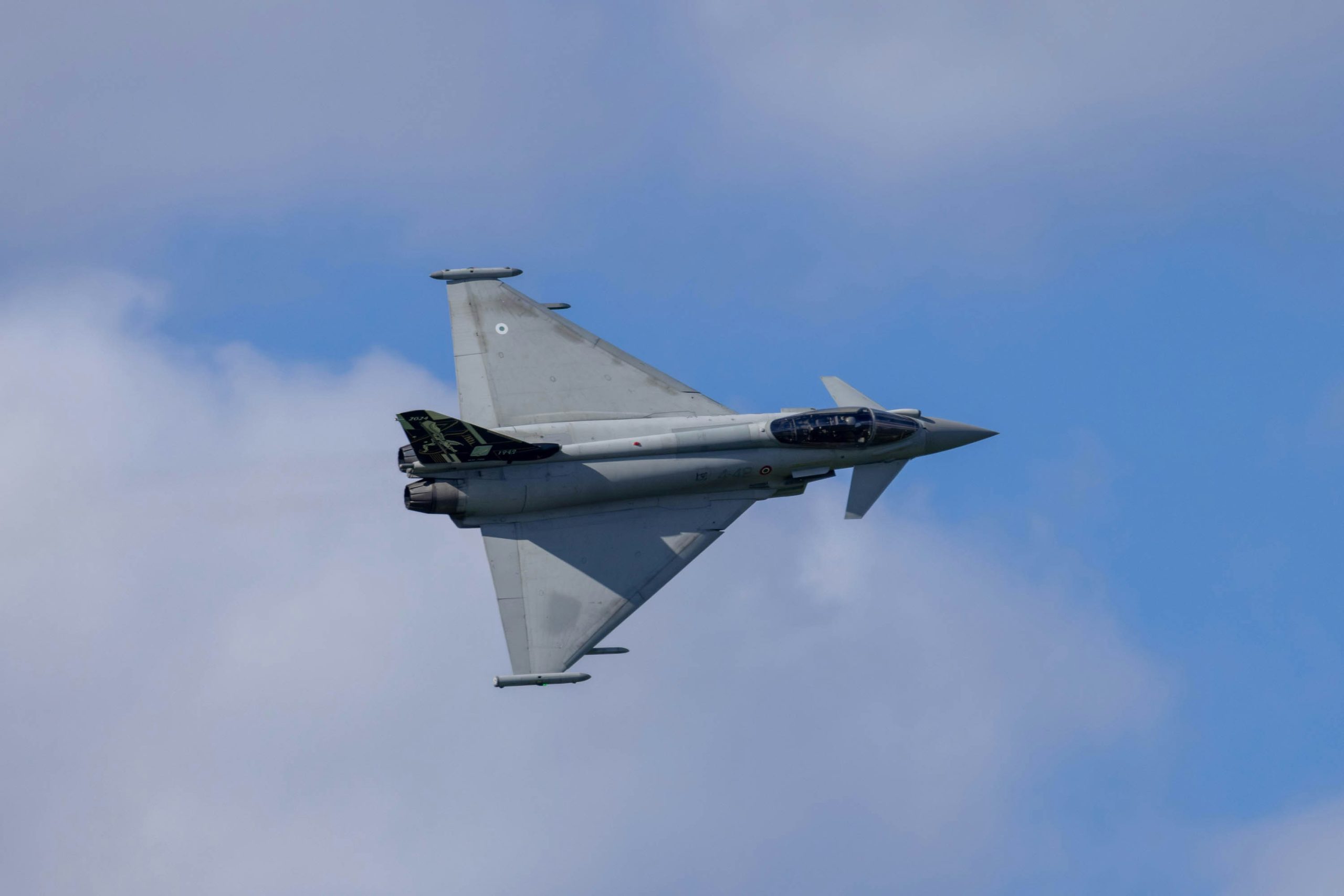The drone incursions of Russia into NATO countries did not go without notice. First, there was Poland on September 10, Romania on September 13, Estonia, on September 19 and the latest was the sightings of drones near two Danish airports which halted the plane traffic in the country within a week. Poland shot down at least 3 drones, the first time a NATO member took military action since the start of Russian full-scale invasion in Ukraine.
On Friday, September 26, a video conference was called up by the European Commissioner for Defence and Space Andrius Kubilius to discuss strengthening the eastern flank. This meeting formally launched the initiative to establish the drone wall along the eastern border of NATO’s territory. In the end, Bulgaria, Denmark, Estonia, Hungary, Latvia, Lithuania, Poland, Romania, Slovakia and Finland took part in the discussion, according to EuroNews. The drone wall should be complemented by a ground and maritime wall.

Source: Edoardo Bortoli, Unsplash
“The repeated violations of our airspace are unacceptable. The message is clear: Russia is testing the EU and NATO. And our response must be firm, united, and immediate,” said Kubilius in an official statement.
The strengthening of the eastern flank according to Kublius could be a combination of sensors, different kinds of weapons and interception systems which could be used to stop incoming drones. Ursula von der Leyen supported the idea of a European drone wall in her State of the Union address on September 10.
Following the first big announcement of the discussion in the week leading up to it, Slovakia and Hungary remained in the shadows; both countries were not invited! However, in the case of Slovakia, this changed on Wednesday leading up to the talks, with Minister of Defense Robert Kaliňák claiming the situation was just a miscommunication. The spokesperson of the European Commission Thomas Regnier, who also first confirmed that Slovakia and Hungary are not invited, issued a statement that Slovakia was now added to the list of countries taking part in the conversations. The diplomatic circles interpreted the situation as allies not trusting Slovakia after its pro-Russian sentiments gre with Robert Fico’s multiple visits to Moscow and meetings with Putin.
Zapad, just a show of power?
Russia seems to be starting to show their power, and testing out what level of intrusion can it perform, before NATO fully intervenes. Did you hear about Zapad [West], the 4-day military exercise of Russian and Belarusian troops? Poland closed their border with Belarus as a response, as the exercise started just two days after the drone incursion in Poland. The exercises took place across 41 training sites in western Russia and Belarus. According to the Kremlin, it involved around 100,000 military personnel. After monitoring the situation, luckily, the exercise did not escalate into any intimidation and stayed behind the Belarussian border.
Operation Eastern Sentry
NATO’s answer to the drone incursion in Poland was the new Operation Eastern Sentry, two days after. The main, somewhat abstract goal is to increase connectivity and flexibility of the eastern flank of the alliance. It will happen only in NATO territory, so excluding western Ukraine for example, as noted by Radio Free Europe. Previously, the NATO allies took care of the air defense themselves, with NATO being there as support. Now, the idea is to link the resources for a faster reaction across the eastern flank.
Eight countries already joined the operation, France with three Rafale fighter jets in Poland, and Airbus A400M military transport aircrafts. Britain with defense missions over Polish airspace with their Typhoon jets, Germany will contribute with Eurofighters and Italy and Denmark also offered their jets. The remaining countries are Spain, Sweden, the Netherlands and the Czech Republic.
Following the drone incursion, Warsaw decided to invoke Article 4 of NATO’s treaty, meaning the consultation, as one of the NATO members feels like any of them is threatened, in territory or security. This is the second time Article 4 was invoked since the start of Russia’s full-scale invasion of Ukraine. Back in February 2022, Bulgaria, the Czech Republic, Estonia, Latvia, Lithuania, Poland, Romania and Slovakia called for consultations of the situation. This is one step before Article 5, the main point of NATO’s founding treaty which states, “the Parties agree that an armed attack against one or more of them in Europe or North America shall be considered an attack against them all.”
“They agree that, if such an armed attack occurs, each of them, in exercise of the right of individual or collective self-defense recognized by Article 51 of the Charter of the United Nations, will assist the Party or Parties so attacked by taking forthwith, individually and in concert with the other Parties, such action as it deems necessary, including the use of armed force, to restore and maintain the security of the North Atlantic area,” the chapter continues.
More money for defense
19 countries are now a part of the SAFE (Security Action for Europe) plan, a new loan instrument for Member States to increase their defense readiness, consisting of €150 billion. Poland should receive the largest amount (€43.7 billion), followed by Romania (€16.7 billion), Hungary and France (€16.2 billion each), Lithuania (€6.4 billion), Latvia (€5.7 billion), Estonia (€2.7 billion), Slovakia (€2.3 billion), and the Czech Republic (€2 billion).
As a part of the loan, the ambassadors coming up with the deal and allocation of funds in future procurement gave a prerequisite for 65% of the weapon system to be made in an EU Member State, Ukraine or in the EEA/European Free Trade Association country. For the components outside of these countries, there is a design authority established, to ensure that the third countries cannot in any way block the use by, for example, refusing software updates. The reason for this measure is the increased geopolitical instability, especially since Europe can no longer rely on protection by the United States.
Will discussions like the one between the eastern flank members help the situation, and establishment of a stronger and united border with Russia? For the upcoming months, the challenge will be to keep Ukraine’s infrastructure running ahead of winter, especially in terms of energy supply, especially electricity and the civilian infrastructure. In 2022, the US, under Biden’s administration connected Ukraine to Europe’s energy system, enabling the country to be independent from Russian energy supply.
